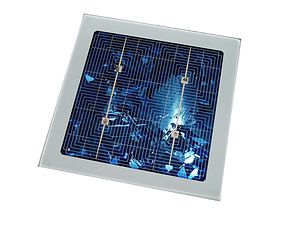Researchers of the Chemical Engineering department and the Kavli institute of the TU DElft have demonstrated that electrons can move freely in layers of linked semiconductor nanoparticles under the influence of light. This new knowledge will be very useful for the development of cheap and efficient quantum dot solar cells.
The researchers published their findings on September 25 on the website of the scientific journal Nature Nanotechnology.
Cheap and efficient
The current crystalline silicon solar panels are expensive to produce. Cheaper solar cells are available, but these are inefficient. For example, an organic solar cell has a maximum efficiency of 8%. One way of increasing the efficiency of cheap solar cells is the use of semiconductor nanoparticles, quantum dots. In theory, the efficiency of these cells can be increased to 44%. This is in part due to the avalanche effect, demonstrated by researchers from TU Delft and the FOM Foundation in 2008. In the current solar cells, an absorbed light particle can only excite one electron (creating an electron-hole pair), while in a quantum dot solar cell a light particle can excite several electrons. The more electrons that are excited, the greater the efficiency of the solar cell.
Bookmark this page for “Linked Nanoparticles” and check back regularly as these articles update on a very frequent basis. The view is set to “news”. Try clicking on “video” and “2” for more articles.
>








